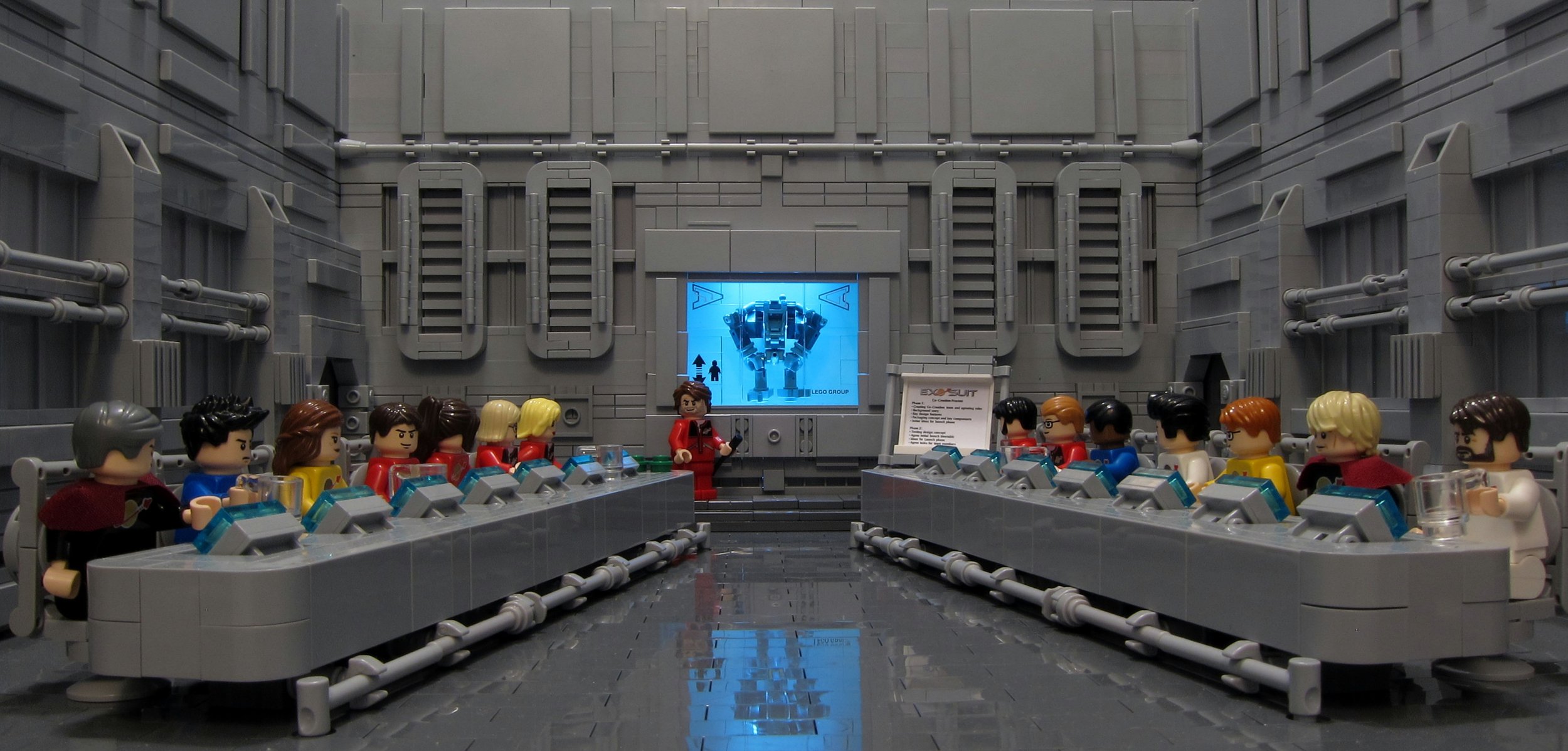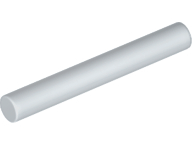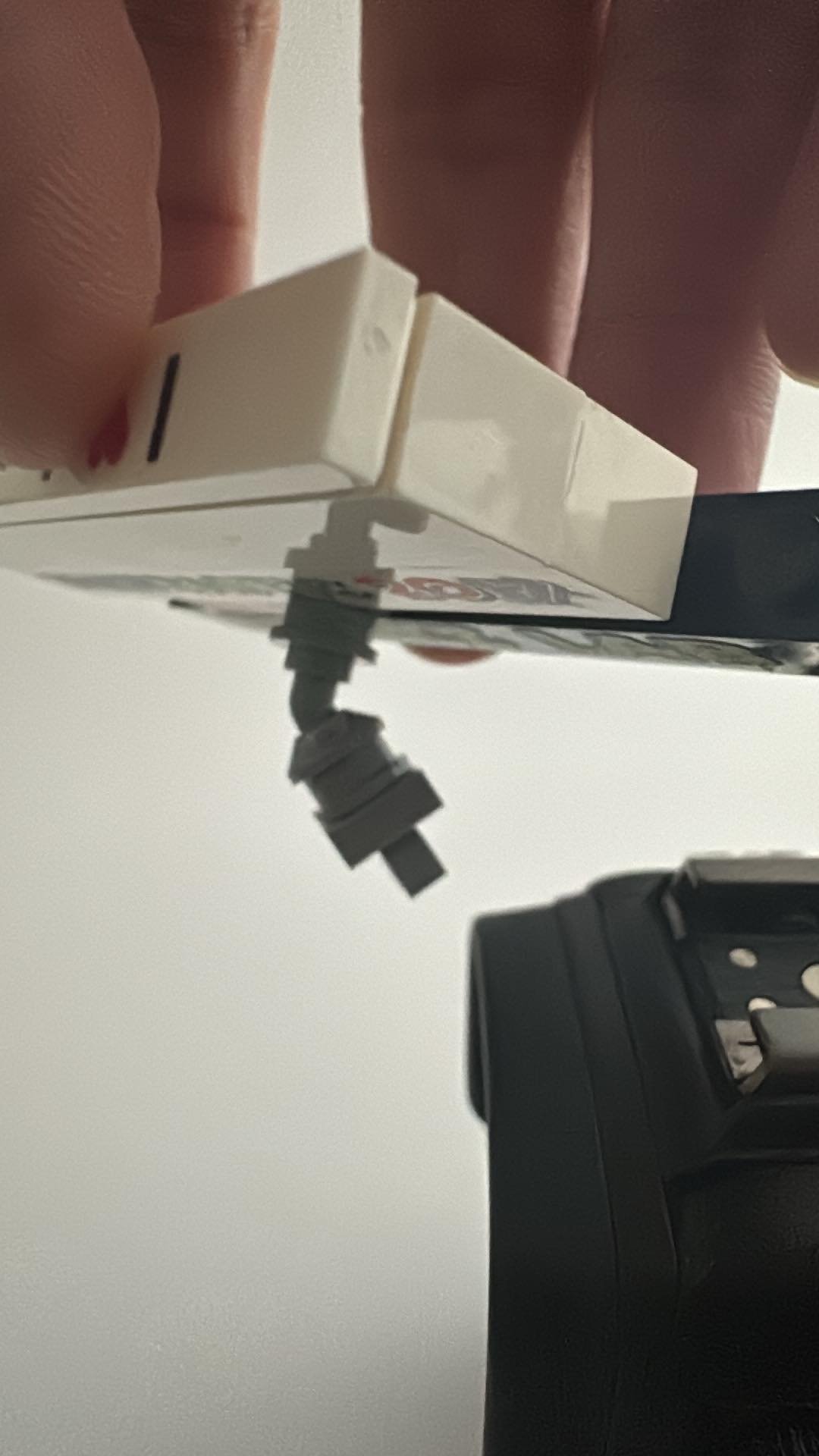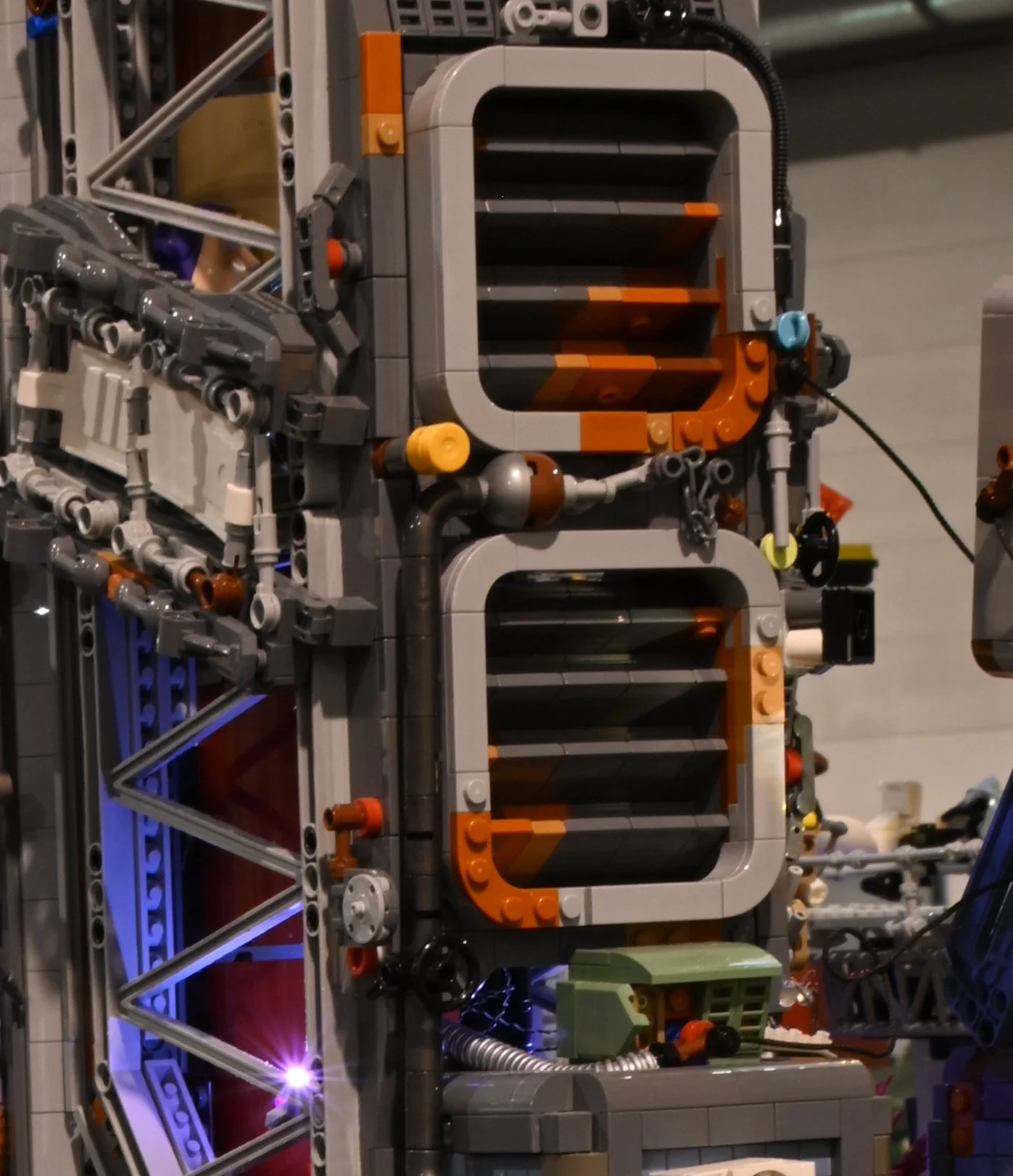Achieving Greeble Greatness (Plus Instructions for a Space Baby Mech Suit)
/After posting my Baby Greeble Mech Suit, we have received quite a few requests for instructions, so I figured I’d share them with you all! But… this wouldn’t be BrickNerd without diving deeper into the topic and looking into: LEGO BABIES.
Oh, wait… I already did that… okay, let’s talk about the other thing: GREEBLES.
But what are greebles, you wonder? This wonderfully sci-fi technique coined by ILM uses lots of small LEGO parts to add detail and texture to a MOC. But what makes a greeble good? I reached out to some of the “greeble greats” to ask. (Even I was surprised at some of the responses from our Greeble Technical Panel!)
So enjoy learning about LEGO greebling as you scroll down to get the instructions for my Space Baby Mech Suit at the end of this article… Shall we begin?
Greeble Technician #1 - British Invasion
When I think of Greeble Greatness, I think of the great works of Peter Reid, the fan designer of the Exo Suit (211099). He and his British disciples have been greebling it up for years and setting the bar for all the Greeble Groupies around the world.
In fact, my Baby Greeble suit was a homage to Mr. Reid, and like everything I build out of LEGO, I assume someone has done it before me—and better. In this case, Wami Delthorn, whom I happened to have met just recently in Manchester at Bricktastic, showed me his lovely version of a baby exo suit:
So I asked Wami, as another Baby Mech builder, how did he approach how he built his suit?
Wami: I had this idea where I wanted to build a scene in which a baby is given the Ideas Exo Suit set and instead builds their own exo suit to wear and promptly causes chaos!
I started with the battle droid body part, as that worked well as the front of the exo suit, with the droid arms forming the frame for the baby to sit in. However, this already made it look quite chunky, so I felt I had to make the rest of it quite chunky to match. I spent ages on the arms, which always looked too spindly until I finally settled on the big shoulder pads, which gave it a chunky look.
Simon: But now that I’m starting down this rabbit hole, I had to ask the big question… What are greebles to you?
Wami: For greebles, I like to imagine their purpose in the model. Is it a pipe, an air intake, a wall panel, etc., so that they look purposeful rather than random.
Simon: So I might as well ask, what’s your go-to Greeble part?
Wami: My favourite greeble? Tough question! I do love the simple 3L bar (87994) and all its various cousins. But the Bar with clip is probably my favourite (48729b) as it has so many uses!
…
(Simon here… That’s a pretty good answer… but this is BrickNerd, after all, so we need to go deeper!)
Greeble Technician #2 - Greeble Mech Madness
Sticking with mechs, I reached out to Alec Doede who has definitely stared into the face of the greeble monster. So I asked him how he builds his very greebly Greeble Mechs:
Alec: There isn’t one “right way” to make a greeble mech. Some prefer it be balanced with armor or angles. It goes back to the intentionality of what you want to achieve. Trial and error is the best way to start a greeble mech. I prefer to start with the limbs and create a uniform joint that will function for both the elbows and knees. Experiment with small parts and see what you can come up with! We have seen so many great new parts in the last five years, plus there are a plethora of tried-and-true staples (t-bar, sink tap, etc.).
Simon: So then… what are greebles to you?
Alec: Greeble = intricate detail that appears to have a mechanical function. A good greeble is not only interesting but looks like it serves a purpose. Intentionality is key.
Simon: You use a lot of fun pieces, so what’s your favourite greeble piece?
Alec: Tough one. The roller skate in bley may be my current favorite. The textures it can create are incredible.
Simon: You know the roller scale is also a 1x1 SNOT plate too, right? That’s half a stud in the front—it’s a decent connection for tubes
Alec: :O … So a plate can connect to that!?
Simon: Yep, have fun! Okay, bonus question - so what makes bad greeble?
Alec: Not necessarily bad, but when you greeble and it isn’t monochrome you have to be very careful. Weathering effects can elevate greebles to another level, but it can be easy to fall into a trap where it looks like “I just picked the first thing I saw in the bin.”
…
(Simon here again… Weathering, eh? That’s an excellent segue into our next expert!)
Greeble Technician #3 - Weathered and Decayed
For those following the New Hashima coverage we did here at BrickNerd, you might have been introduced to Simon Leoff (aka SimonMOCs… yes really :D) who turns out to be quite the greeble expert, especially adding that extra level of decay.
So I asked the better Simon what greebles meant to them:
Simon L.: Greebles are any parts that are not necessary structural-wise but are cool and add details, texture, and depth. They are most likely to be dark or light bley but could be any color, to be honest. For me personally, nearly all good greebles include some bars (I am a huge bar fan!).
BN Simon: I am a huge fan bars too, especially retro gaming ones! And like how a few retro games make a bar so much more fun. So what makes a part a good greeble?
Simon L.: A good greeble is an unusual part usage that makes the people ask themselves, what’s that part? Is that a LEGO piece? It’s even better when it is a part that has a completely different purpose. For me, you can divide between highlight greebles like AC units or other smaller ones and pattern greebles, where you develop a system with a bunch of parts that repeat and make a bigger structure that abstracts away from the single piece and forces the view into the greater system.
nOT JUST BLOWING HOT AIR
BN Simon: Okay, but how do you approach adding weathering to your greebles?
Simon L.: I like to weather down below the greeble as it makes sense that the technical device causes rust due to emitting moisture (if we talk about AC, like in New Hashima builds). Of course, you could also work in some weathering into the greeble itself, but then you would need your greeble parts in different colors than just gray, which isn't that likely.
BN Simon: What’s your favourite greeble part?
Simon L.: I use the espresso-bar one probably the most as it's super useful as it combines bar+plate and also allows you to hinge stuff
But I also enjoy some more unusual parts that builders don’t know or don’t like like so they are cheaper on BrickLink (like the stud shooter triggers on my neo-classic space build).
Greeble Technician #4 - It’s All About The Surface
While most of us think Greebles are little bars or maybe 1x1 rounds, our next expert Blake Foster takes it to a whole different level and scale. He is simply a sci-fi GOAT—as in “Greatest Of All Time” (not the castle animal with spots everyone else likes). We’ve featured him on BrickNerd several times.
I asked Blake, what are greebles to you?
tEXTURE MATTERS
Blake: I think greebles can be a lot of things. The first thing that comes to mind are masses of mechanical-looking bits on a starship. I love that look, but it is very much IN YOUR FACE. Greebles can also be subtle. For example, way back in the day, when we were bouncing ideas around for the original Greeble de Mayo, this was a POC for subtle texture.
It's a very different look from the masses of mechanical bits. Depending on the scale, it doesn't necessarily represent pieces of machinery at all. It could just be projections on the hull or something. At some point, it might become so subtle that we just call it texture. I don't think there's a hard line between the two.
The point is just to add visual interest, but you could say that about a lot of things, e.g. color blocking. So I don't think that's what defines greebles.
Simon: So then what defines the more classic examples of greebles to you?
Blake: Jumping back to the archetypal mechanical-looking greebles, I think the thing that really makes them work is when there is variation in scale and things are connected together. If you look under the hood of a car, there are lots of little dongles, but also a giant engine block in the middle. And all the stuff is interconnected.
So, greebles can do the same thing. There are some little bits and pieces. But also some much larger structures. And those larger structures might have their own greebles. Greebles can fill in odd gaps between hull panels or whatever. But then you can have small greebles filling in the gaps between the large greebles. So kind of layers upon layers of stuff.
Simon: So what I want to know (asking for a friend) is, what makes good greebles?
Blake: Parts with bars sticking off can be low-hanging fruit. It is easy to make them into pipes/conduits connected to other things. But I think the real trick is to find the right balance between order and chaos. Greebling is inherently chaotic. A flat wall is far more orderly than even the most orderly of greebles. But swing too far that way and you lose visual interest. I think it's possible to overshoot in the other direction too, where it starts to look more like a mass of random small elements than machinery.
To get it right, I think stuff has to flow together, e.g., instead of just slapping a bar on somewhere, let that bar be a pipe or conduit connecting two pieces of machinery. What I like to do—both with greebles and with other things—is to look at a little section in isolation and ask if it would make a good MOC by itself, out of context. It is impossible for the answer to always be yes, but often asking the question does identify things that could be improved.
So with greebles, I'd imagine the greebles alone are a MOC. A MOC has both a larger-scale structure and little details. When the greebly bits don't flow together, you lose those larger-scale structures that would make it interesting as a MOC. If everything is a detail, then nothing is. So that's one piece of it. Make the parts look interconnected so that they look like one giant machine instead of a mass of tiny disconnected machines.
Simon: How do greebles come into play when it is time to take pictures of the MOC?
Blake: Think about the concept of leading lines in photography. They give the eye something to follow and tie the composition together. Try to do the same with greebles. Don't just connect every machine to its neighbor and call it a day. Make connections between things that are farther apart to give the eye something to follow. That could be done with chains of little machines that stand out, a line of repeating structures, a greebled color block, more pipes, or whatever.
That kind of comes back to structure at multiple scales again. If everything is tiny parts, you just have one scale. If you zoom in too much, you just see the individual parts, and if you zoom out too much, you don't resolve the details. But with those interconnections large and small, even when you zoom out, there are things that stand out to grab the eye.
Simon: How do you know what details are the right ones to use for greebling?
Blake: You need to be careful to not create organization in the wrong way. Machines are not neat—stuff is shoved into where it fits and not break. The stuff is connected and things that are related are close together, but it's not laid out nicely in front of you.
For example, one look I try to avoid is what I call “quilt greebling” where you have a patch of one thing, then a patch of another thing, in a checkerboard-like arrangement. Those need orderly boundaries wouldn't exist in real life.
Having some repeated structures can look great and make a build look coherent. Aligning some of those structures in ways that make it look like they could be related, even if the connection isn't visible, can look good too. But that doesn't mean everything has to be neatly replicated. Let the elements around the repeated structures bleed together without perfect symmetry.
Here is an example of what I mean by making things line up:
tHE GREEBS MUST FLOW
The yellow things line right up with the grey things, but there's no connection between them. And the center one is lined up perfectly with that thruster. The goal is to make it look like there's more going on beneath, connecting things together. They also tie together that section of the hull.
Simon: So… after all that, what’s your favourite Greeble part?
Blake: That is a complicated question, as the parts that I obsess over can vary a lot between builds or between color schemes. In terms of strictly decorative parts, the ingot is one of my favorite elements ever. It is great for greebles, texture, or just making interesting shapes and any number of other things. The ingot is available in a pretty wide range of colors now, and I've probably used at least a few in almost everything I've built recently.
To some extent, my MVPs for greebling are based individual element scale of what area and scale my greebling is, so there isn’t a single favourite piece, but classes or themes of pieces instead.
Greeble Technician #5 - Jamming with Greebles
A sci-fi round-up wouldn’t complete without talking to Micah Biderman who hosts the annual Space Jam Contest, a celebration of all things sci-fi. What do greebles mean to him?
Micah: Greebles are a way of life. They are really just a way for me to stick random little table scrap techniques into my builds and then have people think I've got really good NPU (when really it's not a very creative use of the table scrap).
Simon: And what makes a good greeble?
Micah: Good greebles are ones that actually look functional or purposeful in some way. I think Blake Foster has done some good examples of this (see above). The ones Grant does are usually not this.
Simon: Do you have a favourite greeble part?
Micah: My favorite greeble part is the lightsaber.
…
(Simon here again… So I think that’s a pretty great wrap-up on sci-fi greebling! Ha, and you thought I forgot about that other kind of greebling. Well don’t worry, dear reader, I got you covered.)
Greeble Technician #6 - Fantastical in Nature
Greebles aren’t just locked into the realm of sci-fi—greebles extend to all themes including castle and fantasy. So I had to ask Eli Willsea (who has built a few things and is definitely an expert on this particular greebling genre) what greebling means to him.
Eli: Greebles are LEGO parts barf that look complex and purposeful that add depth and detail to larger builds. Often they use fun or unique parts in patterns that are satisfying to look at.
Simon: So then, what makes a good greeble?
Eli: A good greeble is planned out and makes sense (at least in a believable sense) that they "do" something or have a purpose within the subject of the build. And they add detail where it might be more plain.
Simon: So what’s interesting about you is that you’re typically not seen as a sci-fi builder, and in fact, you’re mainly a Castle builder. But yet you do some fantastic Fantasy greebles. How do they contrast?
Eli: Fantasy greebles are like space greebles—but in the tech of fantasy! For example, rock carvings in ancient temples, wood carvings, steam punk mechanisms, etc! They are details that add to the depth of the story.
Simon: What’s your favourite Greeble piece?
Eli: My favorite greebles part is the bucket handle!
Greeble Technician #7 - Bio-Mechanical
I saved the best for last. Let’s welcome Alex_mocs to the discussion, a Bionicle builder with an eye towards discussing techniques. What are greebles to him?
Alex: Greebles are small textural details added to a build that add visual interest and variety. Greebles usually refers to mechanical details, like piping, wiring, vents, etc. They’re most effective when they contrast with larger smooth surfaces, like armor plating.
Some people use the term to refer to any smaller-scale detail, like rockwork/masonry or more organic stuff but that’s less common.
Simon: Exactly! We’ve seen greebles in the classic fashion applied to more surfaces and even non-sci-fi wall structures. Can you tell me more about the organic greebles found in Constraction builds?
Alex: System and Constraction have similar approaches to greebling. The difference is that greebles in System builds are usually “in-system” or are used to tile a surface, whereas Constraction greebles are more often used to represent things like the internals of robots so they’re more freeform or follow along body parts.
Simon: Given the biomechanical nature of many Constraction builds, greebling seems more visceral and interesting on Constraction figs. What makes Constraction greebles good?
Alex: In my opinion, good greebles on a Constraction MOC aren’t just random details or technical clutter. You want them to look purposeful and have a flow to them. Getting greebles that both look good and are functional (e.g., form part of the skeleton or frame) is the gold standard.
You can have decorative ones, too—you just want to be thoughtful about how and where they are placed. For example, you might put pistons in the same places as you’d expect muscles or bones on a creature. Ultimately it’s more about consistent texture and thoughtful placement.
Simon: And our final question, what’s your favourite greeble piece?
Alex: My favorite greeble part is the bar holder with clip. It is a great intermediate part with two degrees of freedom. There are lots of good bar-sized greebles out there like minifigure hoses, telephones, etc.
Space Baby Mech Instructions
So there you have it. We’ve finally discovered what good greebling is, how it works, and how it can be used to great effect in LEGO MOCs. I know I learned something, hopefully you did, too.
And not that any one asked me… but my favourite greeble piece is the ‘Overwatch’ gun (which sadly doesn’t come in Light Bluish Grey). The non-90-degree angle, multiple studs with hole connections and some nice detailing make this super fun to work with.
Now I have a promise to fulfill. I said I’d post instructions for my Space Baby Mech Suit for everyone who was patient enough to jump down the greeble rabbit hole, so here they are. (Special thanks to Dana Knudson for reverse engineering the build and creating the instructions!)
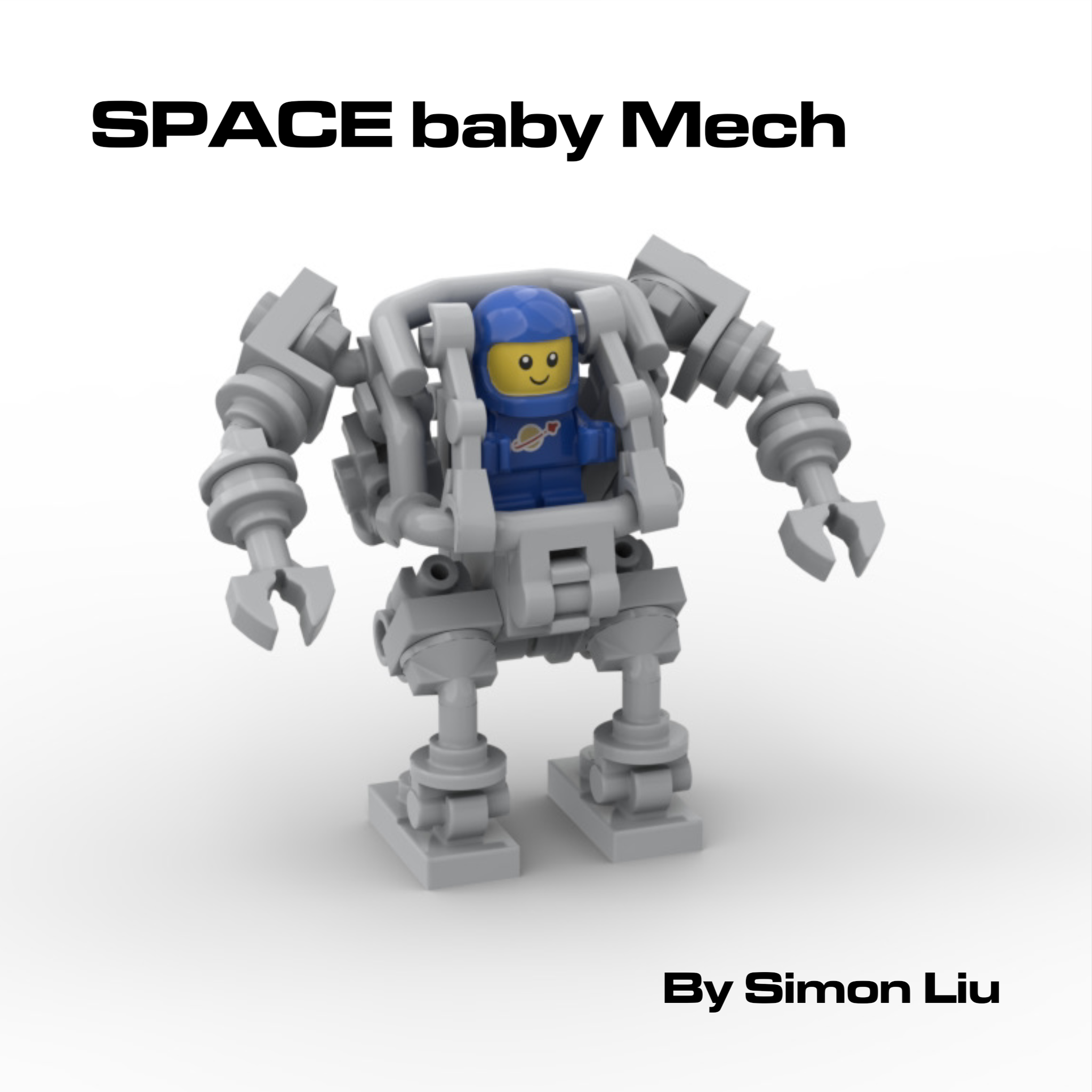
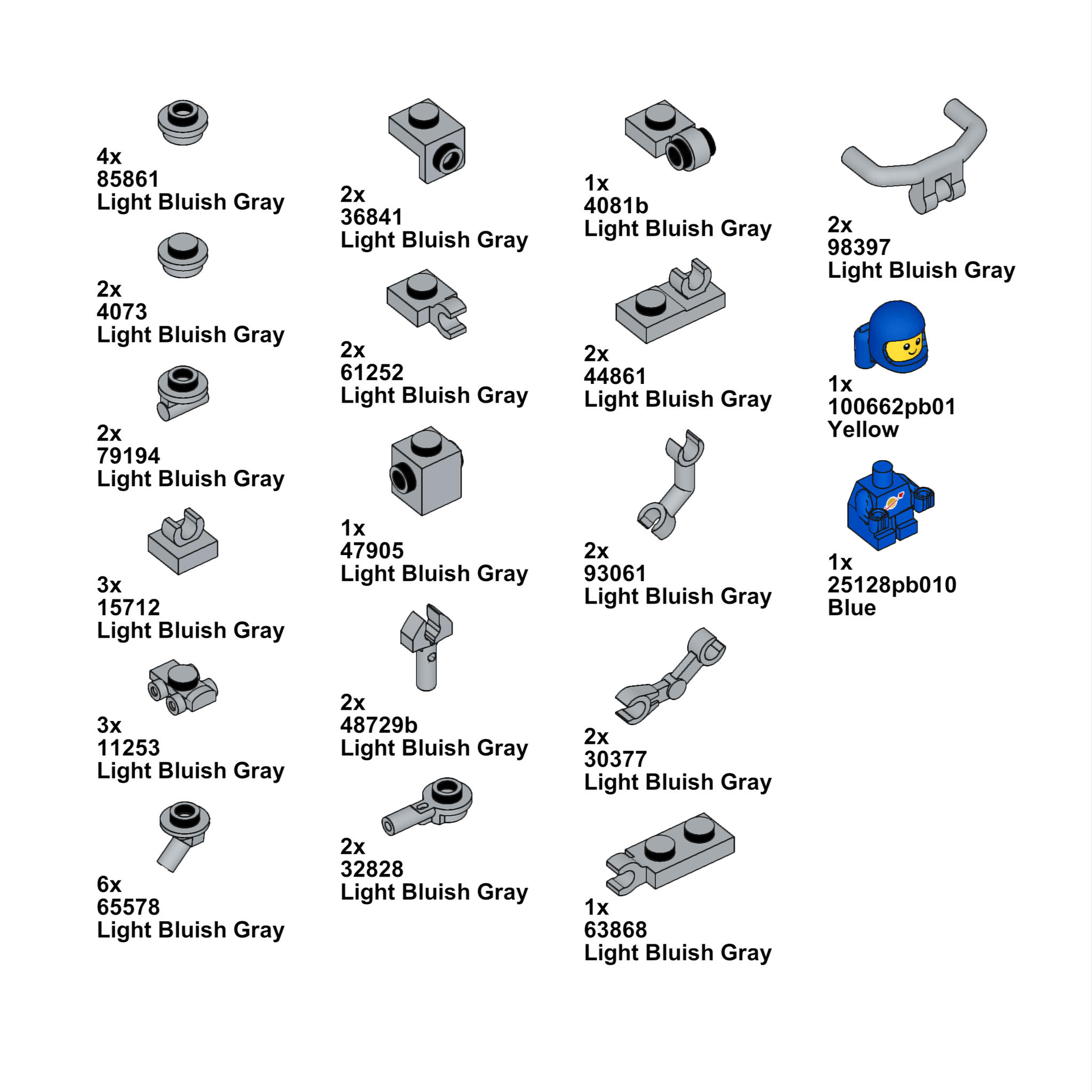
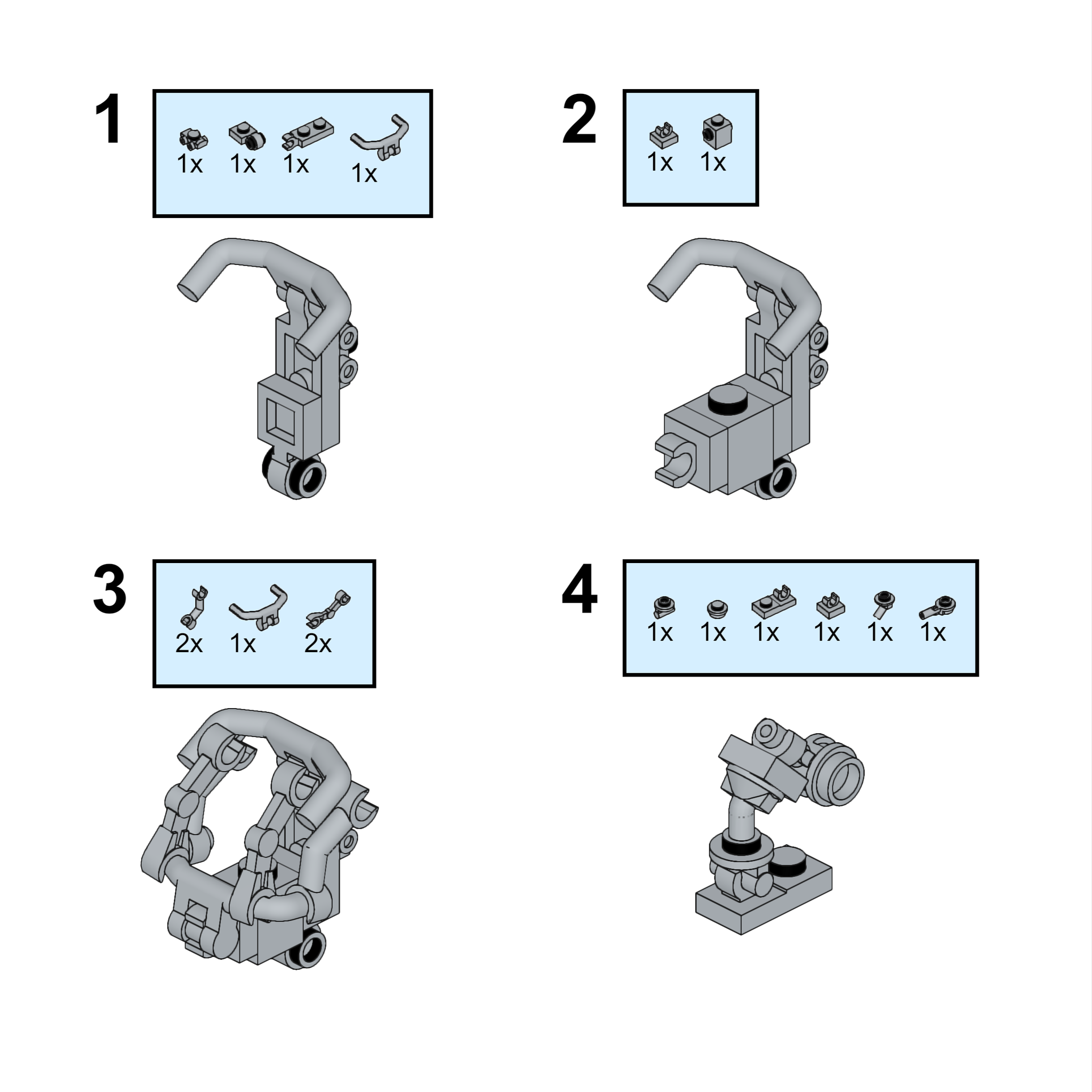

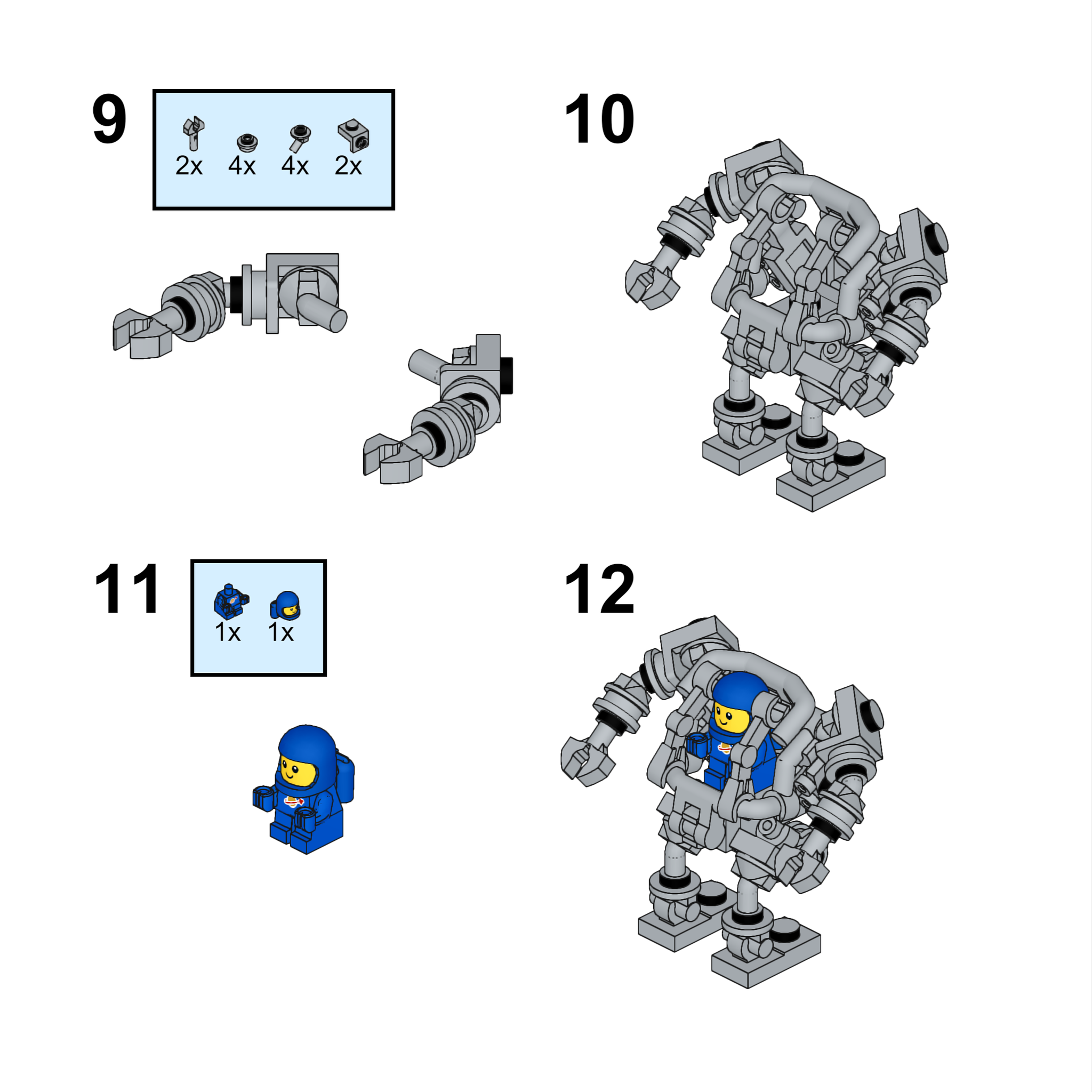
Enjoy!
Best of BrickNerd - Article originally published March 18, 2024.
So what’s YOUR favorite Greeble piece? Let us know in the comments below!
Do you want to help BrickNerd continue publishing articles like this one? Become a top patron like Marc & Liz Puleo, Paige Mueller, Rob Klingberg from Brickstuff, John & Joshua Hanlon from Beyond the Brick, Megan Lum, Andy Price, Lukas Kurth from StoneWars, Wayne Tyler, Dan Church, and Roxanne Baxter to show your support, get early access, exclusive swag and more.





